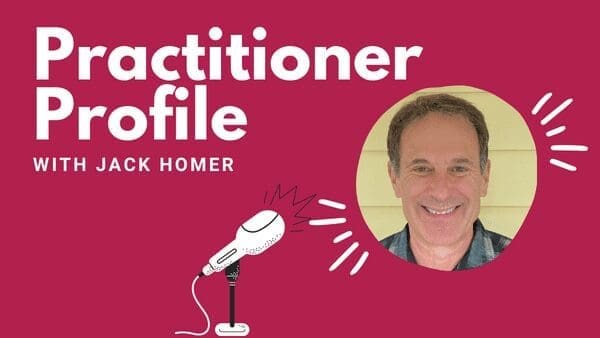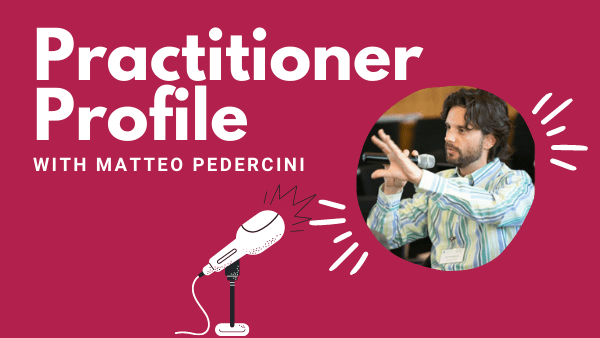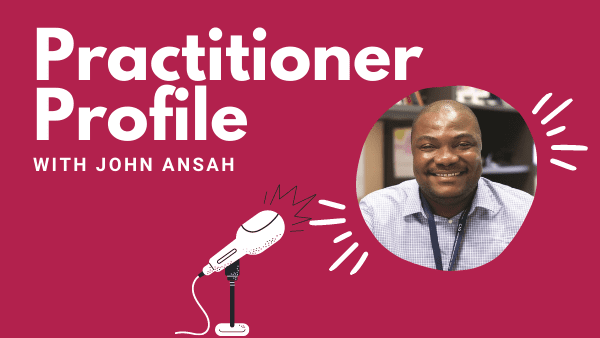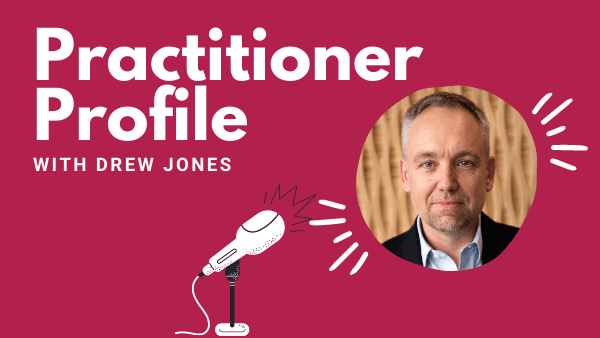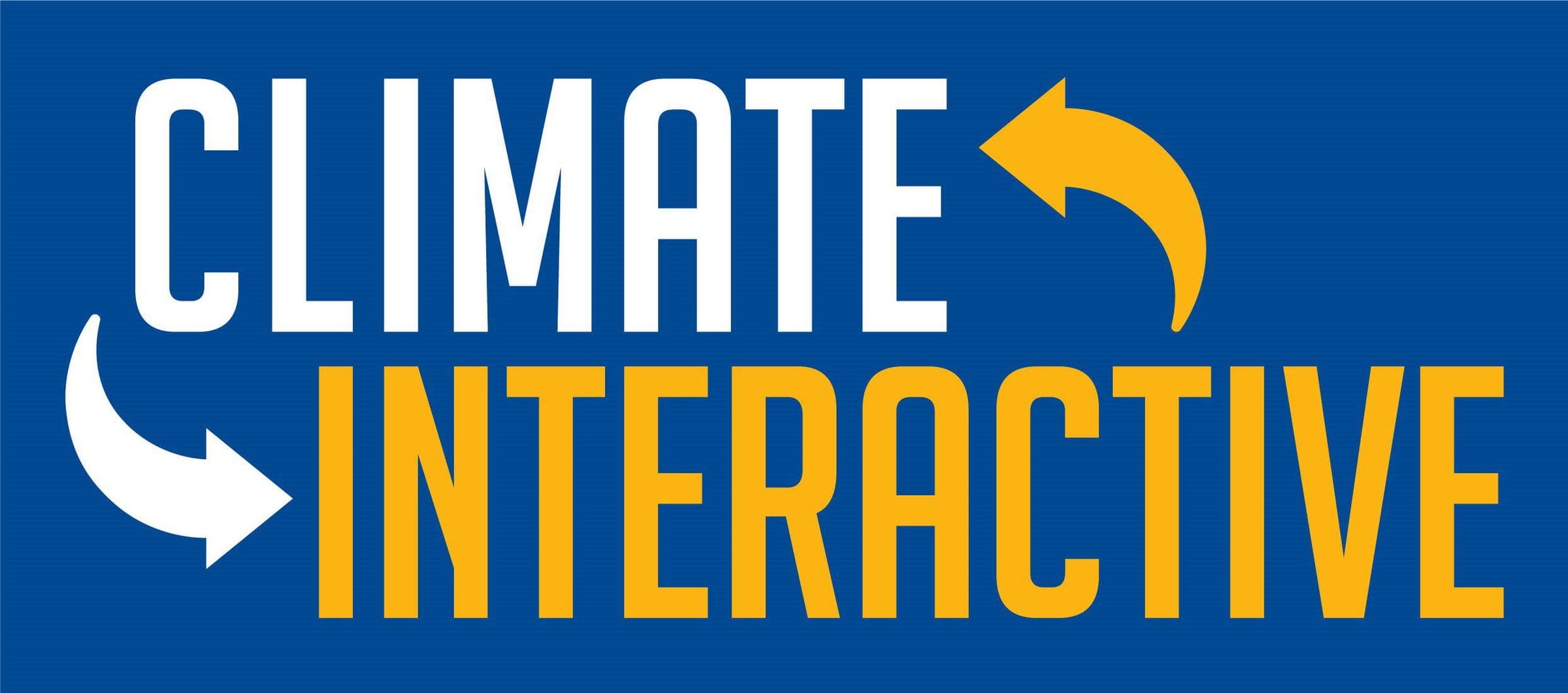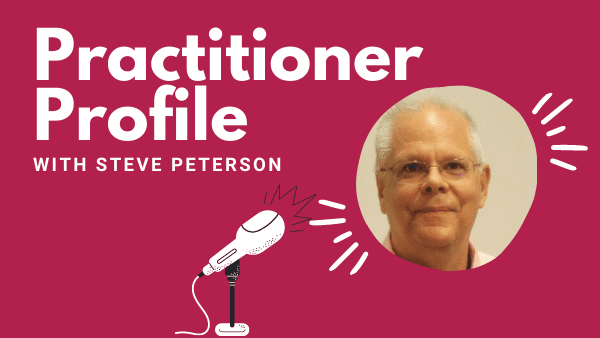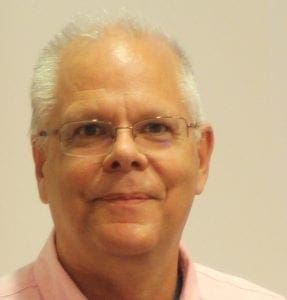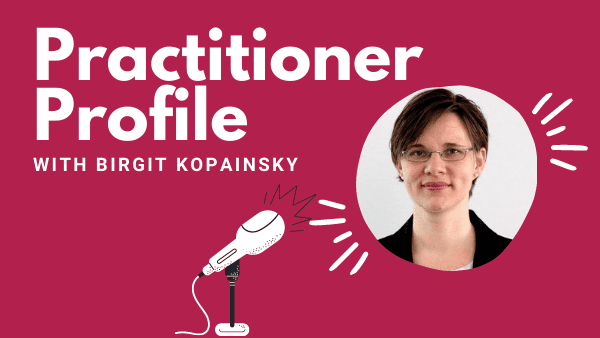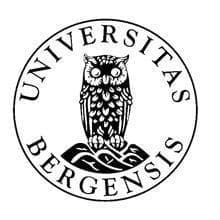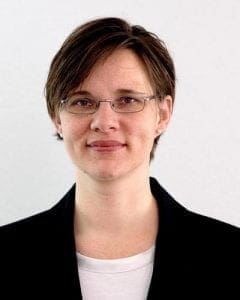Practitioner Profile: Jack Homer, Homer Consulting
Practitioner Profile: Jack Homer, Homer Consulting
Welcome to Practitioner Profiles, a series of up-close blog-length interviews with experienced System Dynamics practitioners. We have a standard set of 10 questions and let practitioners take the responses in any direction they choose. They tell us about who they are, how they got involved with the field, how they work with clients, and in what new directions they may be heading.
For any questions or comments, please contact Dr. Saras Chung (saras@skipdesigned.com).
For this spotlight, we talked with Dr. Jack Homer from Homer Consulting.
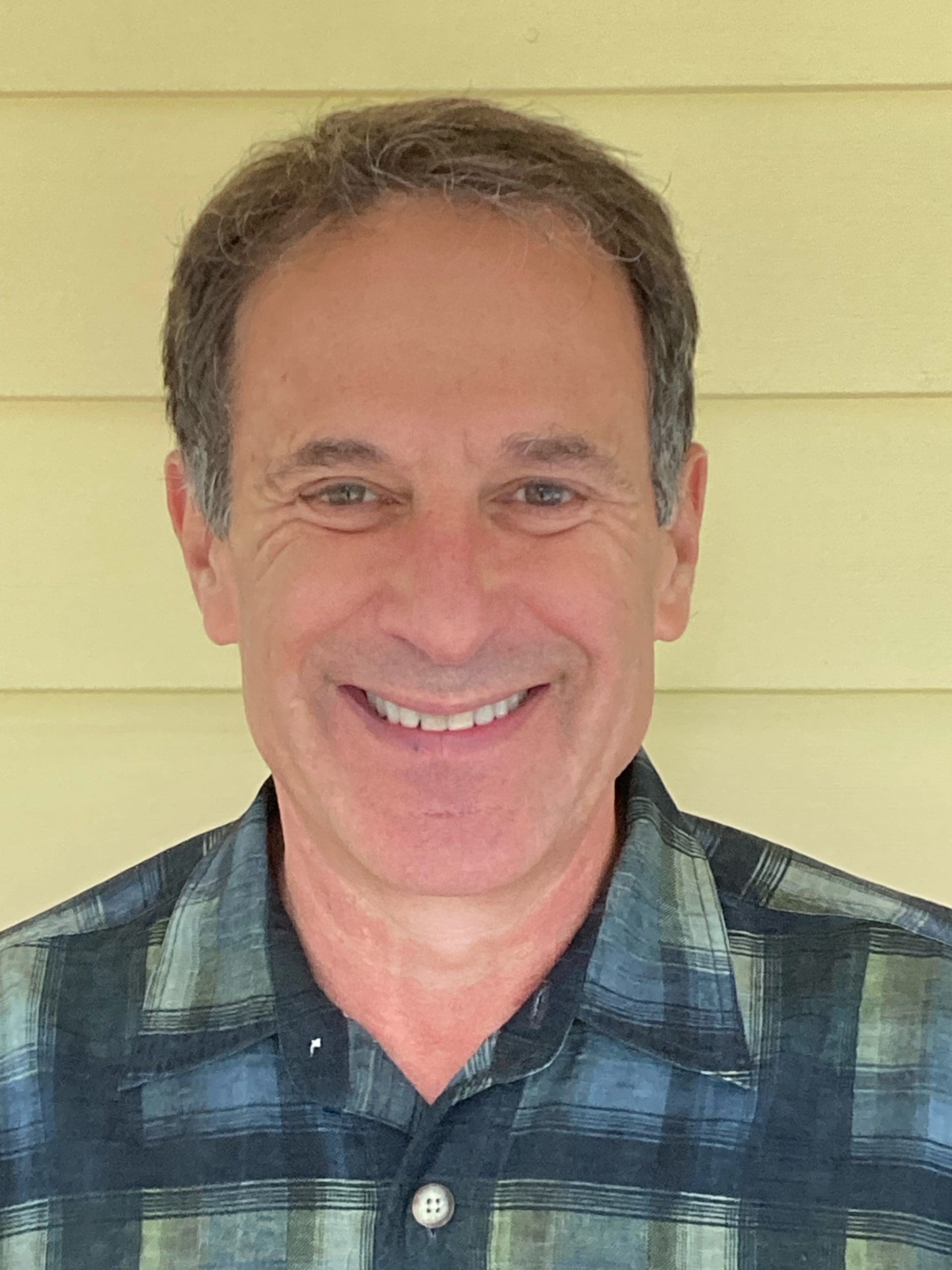
What kinds of SD project applications do you do?
I have operated as Homer Consulting for nearly 35 years now, first in California, then in New Jersey, and now in New York. For the first 15 years, nearly all my consulting projects were in the private sector, working directly with large corporations or as a subcontractor to larger consulting companies. I experienced a major shift toward the public sector in the early 2000s, including more than a dozen years with the US Centers for Disease Control and Prevention (CDC). For the last 20 years, about 70% of my work has been with government and non-profit organizations, most often on health and healthcare policy, but also on climate change and decarbonization. I have some new clients every year, but also some clients with whom I’ve worked for many years, including Rethink Health, Kaiser Permanente, Climate Interactive, and Deloitte.
What is distinctive in your approach to SD projects?
Starting with my PhD dissertation 40 years ago, I have always taken a “structure and data” approach. That means I press the client not only for plausible causal hypotheses and details, but also for any numerical data that might be relevant. There’s plenty of data out there these days to support modeling, although sometimes it needs a deep dive and statistical analysis or algebraic manipulation to see it clearly. This effort is worth it, and I always find that the data tell me something important I didn’t know and that even the client didn’t know or at least didn’t think to communicate.
In what way is Homer Consulting unique or different from other organizations doing SD work?
I’m a solo practitioner, though I often do projects in conjunction with other modelers and consultants. I may miss out on the benefits of being a fixture at a larger organization, but I have always valued my independence and autonomy. This has allowed me to split my time between projects and writing papers about them. Publishing papers has always been important to me personally, and it’s also turned out to be a good way to attract new clients.
What is your role in the organization, especially with regard to SD Project work?
I’m the chief cook and bottle washer, as they say.
How did you originally get interested in SD, and when was that?
Like quite a few SD old-timers, I first became excited as a teenager in the potential of computer simulation as dreamed up by science fiction writer Isaac Asimov in his Foundation Trilogy books. In 1972, I happened to meet Dale Runge from the MIT SD group (he was the husband of my former Spanish teacher), and he told me all about SD and gave me a copy of Jay Forrester’s “Counterintuitive Behavior of Social Systems” paper. As an undergraduate at Stanford, I studied applied mathematics including statistics and operations research, but never found anything that approached SD for its breadth and explanatory power. I started at MIT in 1977 and completed the PhD in 1983.
What individuals and organizations are inspirations to you?
I’m impressed by people in the public sphere who not only put it in the hard analytic work themselves but also grow an effective and long-lived organization around it. People like Amory Lovins (famous for “Soft Energy Paths” and founder of the “think-and-do-tank” RMI), Don Berwick (founder of the Institute for Healthcare Improvement and later head of the US Centers for Medicare and Medicaid Services), Jay Forrester (for building our entire discipline from scratch), and, of course, John Sterman (my classmate at MIT), who more than anyone else moved SD toward recognition as a legitimate management science discipline.
What accomplishments are you proud of?
Let me say first that I’ve always wanted to improve the world in some way with my work. I guess that’s a pretty high bar to set. Many of my projects don’t seem to clear that bar, at least in terms of actions taken subsequently by the client. It’s just a fact that modeling projects sometimes fizzle out and clients may not follow through on recommendations. Even award-winning multi-year work, like what we did for the CDC and Rethink Health, does not always translate into real-world change that I can identify and quantify. And yet, I often hear later from people (who took part in these projects or read our papers about them) how much they learned from our work. My longtime collaborator Bobby Milstein says that our modeling and writing have helped to build the intellectual foundation for a growing movement for universal health and well-being. I must take his word for it because he’s in the trenches more than I am.
What challenges have you experienced?
The frequent fizzling-out and lack of follow-through.
What kinds of SD work would you like to be doing over the next 5 years?
I will continue to work with my favorite clients on important issues but will take on fewer new clients. I’ve done some of this already, and it has freed me up to do volunteer activities like managing the SD Society’s remote one-on-one mentoring program and doing some mentoring myself.
Are there any specific changes or tweaks you would like to make in how you and your organization approach SD project work?
I would like to have more early conversations with clients about how the model or its results will ultimately be used. I’ve found that such a conversation can help keep everyone on the project working together toward a longer-term goal.
Have other questions or comments? Leave a comment below or reach out to Jack at Homer Consulting.
Recent Posts
Society Governance Updates
Society Governance Updates Welcome, Allyson! New President Allyson Beall King joined the Policy Council as our 2024 President. Her primary role is as director of the Washington State University School of the Environment, which focuses on regional ecologies and our...
Call for Presenters: Seminar Series
Call for Presenters: Seminar Series We at the System Dynamics Society are continually seeking vibrant and knowledgeable presenters for our ongoing Seminar Series. As we unfold the calendar, there’s always a place for more insights, experiences, and expertise to enrich...
Honoring Excellence: A Glimpse into the Awards of the International System Dynamics Conference
Honoring Excellence: A Glimpse into the Awards of the International System Dynamics Conference The International System Dynamics Conference brings together experts, practitioners, and students to exchange ideas, showcase real-world applications, and celebrate...
Upcoming Events
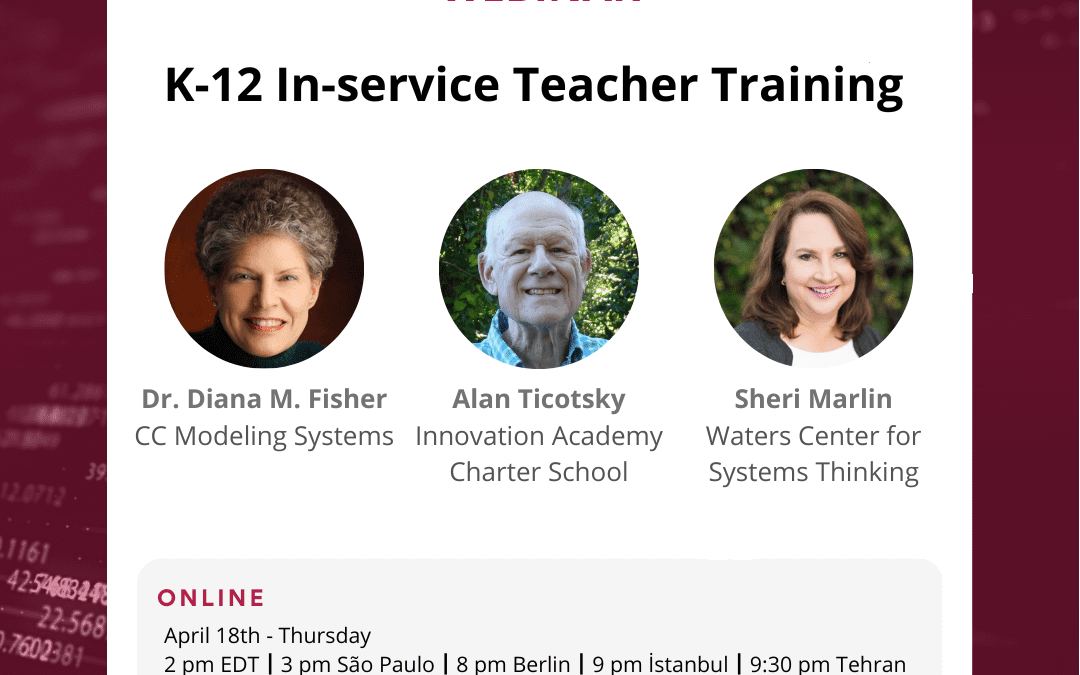
K-12 In-service Teacher Training
Dear Colleagues, We are excited to invite you to our free webinar entitled ‘K-12 In-service Teacher Training’ on Thursday, April 18, at 2:00 p.m. EDT. In the previous webinar, we shared experiences on systems thinking practices in the education of...
Recent Business cases
A Design Value Calculator: A System Dynamics Boardgame
A Design Value Calculator: A System Dynamics Boardgame EXECUTIVE Summary Product design is a specific form of complex innovation that touches all areas of an organization’s management. While entrepreneurs recognise the value of design, they often tend to focus...
The World Bank Uses System Dynamics to Identify Root Causes of Poverty
The World Bank Uses System Dynamics to Identify Root Causes of Poverty EXECUTIVE Summary Madagascar has one of the highest poverty rates in the world. In 2022, an astonishingly three out of every four people in Madagascar lived below the poverty line. Poverty has...
Fast-Track Cities Uses System Dynamics to Enhance HIV Care
Fast-Track Cities Uses System Dynamics to Enhance HIV Care EXECUTIVE Summary Low levels of viral suppression at 69% for people with HIV make it hard to believe the 95% target level will be achieved by 2030 in St. Louis, USA. As a solution, Fast-Track Cities-STL opted...
Join us
Practitioner Profile: Hyunjung Kim, California State University, Chico
Practitioner Profile: Hyunjung Kim, California State University, Chico
Welcome to Practitioner Profiles, a series of up-close blog-length interviews with experienced System Dynamics practitioners. We have a standard set of 10 questions and let practitioners take the responses in any direction they choose. They tell us about who they are, how they got involved with the field, how they work with clients, and in what new directions they may be heading. A new profile will be posted every few weeks during 2021.
For any questions or comments, please contact the editors of these interviews, Dr. Jack Homer (jack@homerconsulting.com) and Dr. Saras Chung (saras@skipdesigned.com).
For today’s spotlight, we talked with Hyunjung Kim from California State University, Chico.


What kinds of SD project applications do you do at CSU Chico?
I teach and conduct system dynamics research in the areas of service delivery, environmental policy, and resource management. With a team of colleagues at the College of Business, we have incorporated SD into our undergraduate and graduate business curriculum. Between our capstone course in strategic decision making and the introductory system dynamics course, over 800 students get exposed to SD every year. My most recent SD research has been with the US Army Corps of Engineers, examining their flood risk management programs and identifying areas where Systems Thinking and SD modeling could be applied. We are also working on a game interface for them to accompany the modeling.
What is distinctive in your approach to SD projects?
My research involves developing and applying formal methods for using qualitative data in system dynamics. It is important to understand perspectives of diverse stakeholders and systematically generate insights from their input. When it comes to teaching, it is important that my students have a positive first experience with SD so that they are motivated to explore it beyond the course.
In what way is your situation for SD modeling at CSU Chico perhaps different from that of academics elsewhere?
Our institution focuses on undergraduate education, and most of my students will go into the workforce soon after graduating. It is important for me to find SD topics that are relevant to my students and teach those topics in a way that can be easily understood and retained over time.
What other SD activities have you been involved in lately?
Currently, I am developing system dynamics learning materials for an exciting project called the Diaries During and After the Lockdown. The project was started by a group of SD modelers and an epidemiologist who created a blog targeted for a non-modeling audience. Using storytelling, it communicates insights from a system dynamics model of the COVID-19 pandemic.
How did you originally get interested in SD, and when was that?
It was during my graduate school orientation at the University at Albany. I was sitting next to a professor with a big smile who asked me why I wanted to study public administration. I told him I wanted to understand policy outcomes before actually implementing a policy, and he said, “Oh, then you should study system dynamics!” That was my first encounter with my mentor George Richardson.
What individuals and organizations are inspirations to you?
The Thursday Group members! The Thursday Group is a system dynamics peer mentoring group, and we have been holding weekly online meetings since 2011. This supportive group inspires me with research ideas and provides collaboration opportunities and feedback on my work.
What accomplishments are you proud of?
I find it rewarding when my former students tell me how much impact the systems perspective has had on them in their profession, and how much they appreciate what they got out of the SD courses.
What challenges have you experienced?
Communicating technical aspects of SD to people with little to no background can be a barrier to reaching a broader audience. Part of the hope of our current COVID Diaries project is to communicate these types of system insights.
What kinds of SD work would you like to be doing over the next 5 years?
I would like to focus on communicating system dynamics to a broader audience with no modeling background. I want to promote general public understanding and to use SD, with rigor and quality, on a daily basis.
Have other questions or comments? Leave a comment below or reach out to Hyunjung Kim.
Recent Posts
Society Governance Updates
Society Governance Updates Welcome, Allyson! New President Allyson Beall King joined the Policy Council as our 2024 President. Her primary role is as director of the Washington State University School of the Environment, which focuses on regional ecologies and our...
Call for Presenters: Seminar Series
Call for Presenters: Seminar Series We at the System Dynamics Society are continually seeking vibrant and knowledgeable presenters for our ongoing Seminar Series. As we unfold the calendar, there’s always a place for more insights, experiences, and expertise to enrich...
Honoring Excellence: A Glimpse into the Awards of the International System Dynamics Conference
Honoring Excellence: A Glimpse into the Awards of the International System Dynamics Conference The International System Dynamics Conference brings together experts, practitioners, and students to exchange ideas, showcase real-world applications, and celebrate...
Upcoming Events

K-12 In-service Teacher Training
Dear Colleagues, We are excited to invite you to our free webinar entitled ‘K-12 In-service Teacher Training’ on Thursday, April 18, at 2:00 p.m. EDT. In the previous webinar, we shared experiences on systems thinking practices in the education of...
Recent Business cases
A Design Value Calculator: A System Dynamics Boardgame
A Design Value Calculator: A System Dynamics Boardgame EXECUTIVE Summary Product design is a specific form of complex innovation that touches all areas of an organization’s management. While entrepreneurs recognise the value of design, they often tend to focus...
The World Bank Uses System Dynamics to Identify Root Causes of Poverty
The World Bank Uses System Dynamics to Identify Root Causes of Poverty EXECUTIVE Summary Madagascar has one of the highest poverty rates in the world. In 2022, an astonishingly three out of every four people in Madagascar lived below the poverty line. Poverty has...
Fast-Track Cities Uses System Dynamics to Enhance HIV Care
Fast-Track Cities Uses System Dynamics to Enhance HIV Care EXECUTIVE Summary Low levels of viral suppression at 69% for people with HIV make it hard to believe the 95% target level will be achieved by 2030 in St. Louis, USA. As a solution, Fast-Track Cities-STL opted...
Join us
Practitioner Profile: Matteo Pedercini, Millennium Institute
Practitioner Profile: Matteo Pedercini, Millennium Institute
Welcome to Practitioner Profiles, a series of up-close blog-length interviews with experienced System Dynamics practitioners. We have a standard set of 10 questions and let practitioners take the responses in any direction they choose. They tell us about who they are, how they got involved with the field, how they work with clients, and in what new directions they may be heading. A new profile will be posted every few weeks during 2021.
For any questions or comments, please contact the editors of these interviews, Dr. Jack Homer (jack@homerconsulting.com) and Dr. Saras Chung (saras@skipdesigned.com).
For today’s spotlight, we talked with Matteo Pedercini from the Millennium Institute.


lWhat kinds of SD project applications does Millennium Institute do?
We develop integrated simulation models for national planning, with the purpose of providing national governments with the tools and capacity to create sustainable development strategies.
What is distinctive in your approach to SD projects?
I can think of two ways our approach is distinctive. First, our primary goal is to provide tools and capacity, so that our client-partners can eventually perform the required analysis themselves. Second, most of our modeling starts from a “template” that accumulates the learning from each country project into an ever-enriching framework.
In what way is MI perhaps different from other organizations doing SD project work?
I think we are an especially open organization, with a flat network structure, that allows all of us to express our ideas and learn from one another.
What is your role at MI?
I supervise our project work and facilitate knowledge exchange within the organization.
How did you originally get interested in SD, and when was that?
My first exposure to SD goes back to the mid-nineties, when I first played the Beer Game and did some very preliminary modeling at undergraduate level. I got so passionate about it that I started looking for self-instruction materials—for example, Road Maps—reading avidly anything I could find. The Fifth Discipline was also influential for me. At the time, I was working for an NGO in Central Africa, and the systems perspective that I was slowly building was proving to be a tremendously effective framework for understanding the issues I was trying to address.
What individuals or organizations are inspirations to you?
I was, and continue to be, inspired by the work of the SD group at the University of Bergen, my alma mater. Besides their research and teaching, what really struck me is how Pål Davidsen and Erling Moxnes embedded that systems perspective and principles in their everyday work, leading the group by example.
What accomplishments are you proud of?
I am happy to see that SD modeling is gradually coming out of the shadows and is increasingly used for sustainable development planning. It is still not a mainstream method, but systems perspectives seem to be gaining broader recognition and acceptance. This acceptance is necessary for the world to adopt a deep understanding of the sustainability issues we face and the changes that need to be made. I believe MI has contributed to such positive change, and I am proud of that.
What challenges have you experienced?
The single most difficult challenge that we have faced in many projects is the high turnover of key personnel in our client-partner institutions. Training is a central component of our approach and is critical for proper institutionalization. High turnover can undermine our attempts to establish a solid core of well-trained personnel.
What kinds of SD work would you like to be doing over the next 5 years?
I’d like to further explore hybrid modeling methods, in particular blending SD with dynamic stochastic general equilibrium modeling, to strengthen our economic formulations, and agent-based modeling, to bring granularity and network dynamics where needed. I have seen such hybrid modeling attempted, but there is plenty of room for improvement in its coherence and transparency.
Are there any specific changes you would like to make in your approach to SD projects?
It is sometimes hard to balance project efficiency and client-partner involvement. Our approach emphasizes such involvement, but we often experience delays trying to adjust the project timeline to the client-partner’s availability. When coupled with the problem I mentioned of client-partner personnel turnover, the delays can lead to a lot of rework. I’d like to be able to increase efficiency without giving up on client involvement, which in the long run is critical for institutionalization.
Have other questions or comments? Leave a comment below or learn more about Matteo Pedercini’s work here.
Recent Posts
Society Governance Updates
Society Governance Updates Welcome, Allyson! New President Allyson Beall King joined the Policy Council as our 2024 President. Her primary role is as director of the Washington State University School of the Environment, which focuses on regional ecologies and our...
Call for Presenters: Seminar Series
Call for Presenters: Seminar Series We at the System Dynamics Society are continually seeking vibrant and knowledgeable presenters for our ongoing Seminar Series. As we unfold the calendar, there’s always a place for more insights, experiences, and expertise to enrich...
Honoring Excellence: A Glimpse into the Awards of the International System Dynamics Conference
Honoring Excellence: A Glimpse into the Awards of the International System Dynamics Conference The International System Dynamics Conference brings together experts, practitioners, and students to exchange ideas, showcase real-world applications, and celebrate...
Upcoming Events

K-12 In-service Teacher Training
Dear Colleagues, We are excited to invite you to our free webinar entitled ‘K-12 In-service Teacher Training’ on Thursday, April 18, at 2:00 p.m. EDT. In the previous webinar, we shared experiences on systems thinking practices in the education of...
Recent Business cases
A Design Value Calculator: A System Dynamics Boardgame
A Design Value Calculator: A System Dynamics Boardgame EXECUTIVE Summary Product design is a specific form of complex innovation that touches all areas of an organization’s management. While entrepreneurs recognise the value of design, they often tend to focus...
The World Bank Uses System Dynamics to Identify Root Causes of Poverty
The World Bank Uses System Dynamics to Identify Root Causes of Poverty EXECUTIVE Summary Madagascar has one of the highest poverty rates in the world. In 2022, an astonishingly three out of every four people in Madagascar lived below the poverty line. Poverty has...
Fast-Track Cities Uses System Dynamics to Enhance HIV Care
Fast-Track Cities Uses System Dynamics to Enhance HIV Care EXECUTIVE Summary Low levels of viral suppression at 69% for people with HIV make it hard to believe the 95% target level will be achieved by 2030 in St. Louis, USA. As a solution, Fast-Track Cities-STL opted...
Join us
Practitioner Profile: Etiënne Rouwette, Radboud University
Practitioner Profile: Etiënne Rouwette, Radboud University
Welcome to Practitioner Profiles, a series of up-close blog-length interviews with experienced System Dynamics practitioners. We have a standard set of 10 questions and let practitioners take the responses in any direction they choose. They tell us about who they are, how they got involved with the field, how they work with clients, and in what new directions they may be heading. A new profile will be posted every few weeks during 2021.
For any questions or comments, please contact the editors of these interviews, Dr. Jack Homer (jack@homerconsulting.com) and Dr. Saras Chung (saras@skipdesigned.com).
For today’s spotlight, we talked with Etiënne Rouwette with Radboud University.


What kinds of SD project applications does your university department do?
I’m the chair of the Methodology department of the Nijmegen School of Management, Radboud University, the Netherlands. We have about 20 research and teaching staff, and about 10 PhDs and postdocs. SD projects for organizations are done as part of courses and theses, and as consultancy assignments. In the past year, our client projects addressed cybersecurity and circular economics; and we also did internal projects for Radboud on school reputation and the demand for master’s programs. We have also done projects on sustainability, energy transition, gender and diversity, and health care and mobility.
What is distinctive in your approach to SD projects?
Almost all of our projects use the facilitated group model building approach, following the lead of former Radboud professor, Jac Vennix. We combine empirical research with stakeholder intervention methods, holding meetings with small groups of five to fifteen people. We employ a combination of brainstorming, Electronic Meeting Systems, participative scenario development, multicriteria decision analysis, and adaptive planning and gaming.
In what way is your organization perhaps different from others doing SD project work?
We have nearly 30 years of experience using facilitated methods and assessing their effectiveness. We tailor the methods to a specific issue and client circumstances. We are developing our intervention methods further, for example, through analysis of video recordings of the sessions to see how clients react to various elements. We would like to refine our methods and determine exactly what the effective ingredients are.
What is your role in your organization, especially with regard to the SD project work?
As department chair, my role is to ensure we have the necessary staff for teaching and research and to cover our application areas. When client prospects come in, I first consider who is interested and has time available to work on the project. Next, I lead an intake process to build an understanding of the client’s problem and choose an appropriate approach for them. Sometimes, potential clients do not seek out our SD expertise initially but are rather part of industry consortia coming out of PhD research. We then have to determine the right match between the potential client’s problem and the methods we have to offer.
How did you originally get interested in SD, and when was that?
I became interested around 1990, when as an undergraduate student in psychology at Utrecht University, I met Jac Vennix. He made systems modeling fun and showed us the logic and rigor of it. When a group provides the information for a model, and you show them the simulated results, you are in effect saying, “This is the logical consequence of what you have told me.” How that changes the understanding and decisions of the group is still my major interest in research.
Besides Jac Vennix, what other individuals have been inspirations to you?
Jay Forrester is definitely an inspiration, as the founding father of system dynamics, for his work on grand societal challenges and his emphasis on education. In 2019, my son was born, and he is an inspiration in an unexpected way. Suddenly, simulations to the year 2100—for instance, in climate models—have become a lot more relevant.
With regard to SD project work, what accomplishments are you proud of?
Two client engagements come to mind: one on safety in a city district, and the second on criminal justice. I met the leaders for the first project again 15 years after the engagement, and they related the circuitous and unexpected ways in which our causal-loop diagram ended up influencing the city’s policies and life in that neighborhood. The project on criminal justice was built with multiple stakeholder groups at the national level and resulted in a large simulation model. The project led to over a dozen follow-up projects with national ministries.
What challenges have you experienced with respect to SD project work?
While most clients have been receptive to the systems work, sometimes the findings lead to no change, or the process is terminated midway. These negative results seem to occur when the findings go against the interest of one or more important stakeholders. I would like to learn more about how our facilitated approaches might accommodate emotion and politics.
What kinds of SD project work would you like to be doing over the next 5 years?
I recently had the opportunity to work with scientists on the subject of cognitive decline due to dementia. The participants were specialized in different domains – geriatrics, radiology, sleep, nutrition – resembling the “silos” in private or government organizations. I found that the integrative approach of group model building worked very well even in this realm of clinical science. I hope to be doing more such “team science” projects in the coming years—a concept gaining importance in the Netherlands and elsewhere.
Have questions/comments? Reach out to Etiënne Rouwette or leave a note below.
Recent Posts
Society Governance Updates
Society Governance Updates Welcome, Allyson! New President Allyson Beall King joined the Policy Council as our 2024 President. Her primary role is as director of the Washington State University School of the Environment, which focuses on regional ecologies and our...
Call for Presenters: Seminar Series
Call for Presenters: Seminar Series We at the System Dynamics Society are continually seeking vibrant and knowledgeable presenters for our ongoing Seminar Series. As we unfold the calendar, there’s always a place for more insights, experiences, and expertise to enrich...
Honoring Excellence: A Glimpse into the Awards of the International System Dynamics Conference
Honoring Excellence: A Glimpse into the Awards of the International System Dynamics Conference The International System Dynamics Conference brings together experts, practitioners, and students to exchange ideas, showcase real-world applications, and celebrate...
Upcoming Events

K-12 In-service Teacher Training
Dear Colleagues, We are excited to invite you to our free webinar entitled ‘K-12 In-service Teacher Training’ on Thursday, April 18, at 2:00 p.m. EDT. In the previous webinar, we shared experiences on systems thinking practices in the education of...
Recent Business cases
A Design Value Calculator: A System Dynamics Boardgame
A Design Value Calculator: A System Dynamics Boardgame EXECUTIVE Summary Product design is a specific form of complex innovation that touches all areas of an organization’s management. While entrepreneurs recognise the value of design, they often tend to focus...
The World Bank Uses System Dynamics to Identify Root Causes of Poverty
The World Bank Uses System Dynamics to Identify Root Causes of Poverty EXECUTIVE Summary Madagascar has one of the highest poverty rates in the world. In 2022, an astonishingly three out of every four people in Madagascar lived below the poverty line. Poverty has...
Fast-Track Cities Uses System Dynamics to Enhance HIV Care
Fast-Track Cities Uses System Dynamics to Enhance HIV Care EXECUTIVE Summary Low levels of viral suppression at 69% for people with HIV make it hard to believe the 95% target level will be achieved by 2030 in St. Louis, USA. As a solution, Fast-Track Cities-STL opted...
Join us
Using System Dynamics to Improve Patient Care
Using System Dynamics to Improve Patient Care
By Şanser Güz, Orkun İrsoy, and Naz Beril Akan
Why do many people practice and advocate systems thinking in biomedical sciences? The human body is a system with strong regulatory mechanisms that maintain the steady state of internal physiological conditions, homeostasis. The regulatory mechanisms of various subsystems of the body emerge from the interaction of feedback signals and provide the body with an internal balancing structure against natural disturbances. But what if the disturbances are far from natural, what if they are chronic or repetitive or interfering with the system itself? Such disruptions in those well-regulated homeostatic systems are the possible leverage points where systemic analysis can add a great deal of value. These valuable insights can range from deepening inferences about the internal causes to providing alternative methods to alleviate the problem.
Hematological dynamics, in particular, is one of the topics well-covered in the field of System Dynamics, not because of its popularity but due to its inherent delay and feedback-rich nature. Unidirectional thinking falls short in providing successful management of such systems, which attracts the system thinkers. Not surprisingly, including ours, 3 out of 4 articles in the special issue of System Dynamics Review on Biomedical Modeling are related to hematological dynamics.
In our recent study, we take on a hematological disorder called chemotherapy-induced neutropenia (CIN). Along with its targets, the malignant tumors, chemotherapy also damages the valuable stem cell stocks in the bone marrow as a “side effect”. So why are stem cells so valuable to begin with? Stem cells are the earliest precursor cells in the blood cell production chain. When their stock is damaged by a strong disturbance such as chemotherapy, it results in a short supply of blood cells which can only be observed after a certain time. Effectively, we are dealing with a physiological high order supply chain residing in the human body. When the chemotherapy hits the production facility, effects are visible at the consumer level (i.e. blood cells in circulation) after several material delays.
Aforementioned internal homeostatic regulation is strong, however, for a disturbance that is repetitive. Having delayed effects such as chemotherapy, endogenous mechanisms may prove to be insufficient to address it. Intensive chemotherapy regimens often result in short supply and oscillations in the leading white blood cells of the immune system, the neutrophils, giving rise to chemotherapy-induced neutropenia (CIN). This is a risky condition for a patient having cancer treatment as it leaves the patient with a vulnerable immune system, against even the simplest of infections. Granulocyte-Colony Stimulating Factor (G-CSF) is the supplementary agent used in the treatment of CIN, stimulating neutrophil production from many stages. However, long delays along the blood cell production chain, susceptibility of stem cells to chemotherapy, and mobilizing effect of G-CSF which depletes the neutrophil reservoir, eventually creates multiple trade-offs inhibiting an easy solution.
In our work, “Dynamic trade-offs in granulocyte colony-stimulating factor (G-CSF) administration during chemotherapy”, we modeled the process in the light of available evidence and previous mechanistic models from other domains of research. With this research, we were able to provide insights on which physiological processes are at play in shaping the patient’s response to treatment and which loops are dominant for the prescription of https://www.papsociety.org/xanax-alprazolam-1-mg/ treatment protocols. Even though the base model was built for a standard patient profile, we see this study as an advancement towards personalized treatments of CIN and plan to build on this subject in future research. We imagine a flight simulator that can be calibrated for individual patients that can be used for generating effective personalized treatment protocols. Following this path has the potential to alleviate neutropenia for people under chemotherapy and improve patient care in a personalized manner.
We started studying the management of CIN nearly two years ago as our bachelor’s graduation project topic. The work evolved continuously during this time period, with its latest output being this journal article. Our group of three worked on this long enough that System Dynamics and chemotherapy-induced neutropenia became one emerged bilateral entity, and it is only half a joke. As we delved deeper into medical literature and System Dynamics simultaneously, we found astonishing similarities in storytelling on both sides. Our task as modelers was to make a necessary language translation between two mediums and to make an adequate implementation of the method at hand. Because of this very similarity, endogenous feedback structures and systems modeling have been well recognized among the people of medicine. Hence, System Dynamics practitioners like us can use this opportunity to direct their work in this domain of research, where the toolset they use has the potential to systemically analyze, give useful returns, and make a positive change.
Want to learn more about Biomedical Modeling?
Join us for a Seminar on the special issue of the System Dynamics Review!
June 09 @ 11 am NY
CALL TO ACTION
- Find Modelers…do you envision a similar project? contact the society to be connected to modelers to help you out (have it go to rebecca@systemdynamics.org)
- Join now for free access to the journal
Recent Posts
Society Governance Updates
Society Governance Updates Welcome, Allyson! New President Allyson Beall King joined the Policy Council as our 2024 President. Her primary role is as director of the Washington State University School of the Environment, which focuses on regional ecologies and our...
Call for Presenters: Seminar Series
Call for Presenters: Seminar Series We at the System Dynamics Society are continually seeking vibrant and knowledgeable presenters for our ongoing Seminar Series. As we unfold the calendar, there’s always a place for more insights, experiences, and expertise to enrich...
Honoring Excellence: A Glimpse into the Awards of the International System Dynamics Conference
Honoring Excellence: A Glimpse into the Awards of the International System Dynamics Conference The International System Dynamics Conference brings together experts, practitioners, and students to exchange ideas, showcase real-world applications, and celebrate...
Upcoming Events

K-12 In-service Teacher Training
Dear Colleagues, We are excited to invite you to our free webinar entitled ‘K-12 In-service Teacher Training’ on Thursday, April 18, at 2:00 p.m. EDT. In the previous webinar, we shared experiences on systems thinking practices in the education of...
Recent Business cases
A Design Value Calculator: A System Dynamics Boardgame
A Design Value Calculator: A System Dynamics Boardgame EXECUTIVE Summary Product design is a specific form of complex innovation that touches all areas of an organization’s management. While entrepreneurs recognise the value of design, they often tend to focus...
The World Bank Uses System Dynamics to Identify Root Causes of Poverty
The World Bank Uses System Dynamics to Identify Root Causes of Poverty EXECUTIVE Summary Madagascar has one of the highest poverty rates in the world. In 2022, an astonishingly three out of every four people in Madagascar lived below the poverty line. Poverty has...
Fast-Track Cities Uses System Dynamics to Enhance HIV Care
Fast-Track Cities Uses System Dynamics to Enhance HIV Care EXECUTIVE Summary Low levels of viral suppression at 69% for people with HIV make it hard to believe the 95% target level will be achieved by 2030 in St. Louis, USA. As a solution, Fast-Track Cities-STL opted...
Join us
Practitioner Profile: Douglas McKelvie, Symmetric Scenarios
Practitioner Profile: Douglas McKelvie, Symmetric Scenarios
Welcome to Practitioner Profiles, a series of up-close blog-length interviews with experienced System Dynamics practitioners. We have a standard set of 10 questions and let practitioners take the responses in any direction they choose. They tell us about who they are, how they got involved with the field, how they work with clients, and in what new directions they may be heading. A new profile will be posted every few weeks during 2021.
For any questions or comments, please contact the editors of these interviews, Dr. Jack Homer (jack@homerconsulting.com) and Dr. Saras Chung (saras@skipdesigned.com).
For today’s spotlight, we talked with Douglas McKelvie with Symmetric Scenarios.

What kinds of SD project applications does Symmetric Scenarios do?
Our emphasis is on health and social care and related domains, such as services for children, criminal justice, and workforce development and planning.
What is the history of the organization?
Symmetric was founded in 2005 by a small group led by Eric Wolstenholme. Initially, Eric, David Todd, and I were the main modelers, working alongside non-modeler colleagues, David Monk and Steve Arnold, who came from health services management. David Todd returned to New Zealand ten years ago, and Eric gradually retired. Now, I work with Donald Scott, a former social work colleague. Eric still contributes valued insights and mentorship.
What is your current role with the organization?
As owner, I run the business. I take the lead on model building (typically group model building), where I work with expert facilitators and other associates. I am based in Edinburgh and work across the United Kingdom, occasionally beyond.
What is distinctive in your approach to SD projects?
We almost always simulate, true to Forrester’s maxim that you cannot tell how a complex system will behave from a diagram alone. STELLA’s modular capabilities have made a big difference to how we develop models.
Our models often combine some simple structures, such as capacity-constrained service pathways, ageing chains, workforce chains, and financial flows. Modules make it much easier to lay out such structures.
How else is Symmetric distinctive?
For several of us, a strong commitment to a particular area, human services, pre-dated our interest in SD. And we collaborate—for example, we are currently working with action researchers on the subject of family support.
How did you originally get interested in System Dynamics, and when was that?
My first career was as a social worker. In the 1990s, I had a national policy role, planning the Scottish social services workforce. Concurrently, I did masters study that introduced me to simulation. In 2002, I moved into consultancy, fortuitously becoming a colleague of Eric Wolstenholme and learning SD from him.
What individuals and organizations are inspirations to you?
Many. I aspire to combine Eric’s insights on service flows and capacity constraints with the pioneering work by Jack Homer and Gary Hirsch on the dynamics of specific diseases. I admire how John Sterman and Kim Warren explain SD clearly and concisely. I also enjoy model-chat with Sarah Wylie Boyar. And I feel indebted to isee systems, who keep extending the power of STELLA for modelling and communicating insights.
What have you been able to achieve with your SD modeling?
It’s important that our models have integrity and provide meaningful insights for the client. These insights may sometimes seem obvious to a systems thinker, but they do not start that way for our clients. For example, in the UK health system, the discourse around waiting times distorts people’s mental models to the point that they forget the simple physics of capacity limitation. When people become expert at managing the problems generated by poorly designed systems, they can end up confused about cause and effect. We try to shift their mental models so they can see how things work and what is possible.
What challenges have you experienced with respect to SD project work?
There’s usually a point in the project when everybody wants to see a full running model, and you have to commit to a level of granularity and a policy time horizon. That can be a stressful time, having to place a bet on how best to address the client’s questions. Also, there’s the issue of data. For all the talk of being ‘data-led’, few organizations have a proper comprehensive approach to data collection. Wouldn’t it be nice to start every project with time series data covering all key variables?
What kinds of work would you like to be doing over the next 5 years?
I’d like to spend more of my time training people in how to build good models, as well as developing exploratory models based on my own interests. Also, I’d like to write more. Eric Wolstenholme and I published a book in 2019, The Dynamics of Care (Springer), outlining a variety of models built by Symmetric.
Have questions/comments? Reach out to Douglas McKelvie or leave a note below in the comments!
Recent Posts
Society Governance Updates
Society Governance Updates Welcome, Allyson! New President Allyson Beall King joined the Policy Council as our 2024 President. Her primary role is as director of the Washington State University School of the Environment, which focuses on regional ecologies and our...
Call for Presenters: Seminar Series
Call for Presenters: Seminar Series We at the System Dynamics Society are continually seeking vibrant and knowledgeable presenters for our ongoing Seminar Series. As we unfold the calendar, there’s always a place for more insights, experiences, and expertise to enrich...
Honoring Excellence: A Glimpse into the Awards of the International System Dynamics Conference
Honoring Excellence: A Glimpse into the Awards of the International System Dynamics Conference The International System Dynamics Conference brings together experts, practitioners, and students to exchange ideas, showcase real-world applications, and celebrate...
Upcoming Events

K-12 In-service Teacher Training
Dear Colleagues, We are excited to invite you to our free webinar entitled ‘K-12 In-service Teacher Training’ on Thursday, April 18, at 2:00 p.m. EDT. In the previous webinar, we shared experiences on systems thinking practices in the education of...
Recent Business cases
A Design Value Calculator: A System Dynamics Boardgame
A Design Value Calculator: A System Dynamics Boardgame EXECUTIVE Summary Product design is a specific form of complex innovation that touches all areas of an organization’s management. While entrepreneurs recognise the value of design, they often tend to focus...
The World Bank Uses System Dynamics to Identify Root Causes of Poverty
The World Bank Uses System Dynamics to Identify Root Causes of Poverty EXECUTIVE Summary Madagascar has one of the highest poverty rates in the world. In 2022, an astonishingly three out of every four people in Madagascar lived below the poverty line. Poverty has...
Fast-Track Cities Uses System Dynamics to Enhance HIV Care
Fast-Track Cities Uses System Dynamics to Enhance HIV Care EXECUTIVE Summary Low levels of viral suppression at 69% for people with HIV make it hard to believe the 95% target level will be achieved by 2030 in St. Louis, USA. As a solution, Fast-Track Cities-STL opted...
Join us
Practitioner Profile: John Ansah, Duke NUS Medical School
Welcome to Practitioner Profiles, a series of up-close blog-length interviews with experienced System Dynamics practitioners. We have a standard set of 10 questions and let practitioners take the responses in any direction they choose. They tell us about who they are, how they got involved with the field, how they work with clients, and in what new directions they may be heading. A new profile will be posted every few weeks during 2021.
For any questions or comments, please contact the editors of these interviews, Dr. Jack Homer (jack@homerconsulting.com) and Dr. Saras Chung (saras@skipdesigned.com).
For today’s highlight, we talk with Dr. John Ansah from Duke-National University of Singapore Medical School.
What kinds of SD project applications do you do at Duke-NUS?
I am in the Health Services and Systems Research Department, where we teach and do projects on population health, health care, and social care.
What is distinctive in your approach to SD projects?
We use system dynamics as an organizing framework for big projects with many workstreams and diverse methodologies. This allows us to introduce SD methodology to experts in health services research so that they can use or translate model insights to inform policy. Our projects are mainly in Singapore, but for the past few years we have also worked in Cambodia, Thailand, and Vietnam, and are now exploring opportunities in the Philippines, Malaysia, and Indonesia.
What is your role at Duke-NUS, especially on the SD project work?
I am the lead SD teacher and researcher at Duke-NUS. I lead the SD projects, do the modeling, and train the project staff working with me. In addition, I run workshops to introduce health care professionals to systems thinking and system dynamics methodology.
How did you originally get interested in SD, and when was that?
I was introduced to SD during my master’s degree program in Norway, in 2003. A professor at Oslo Business School introduced me to Professor Pal Davidsen at the University of Bergen. I spent a year taking all the required SD modeling courses, and then entered the PhD program.
What individuals and organizations are inspirations to you?
Many individuals in the SD Society inspire me, including Pal Davidson—my PhD advisor; Jack Homer—for his health care modeling; Peter Hovmand—for his ability to engage stakeholders and communicate complex insights; and Bob Eberlein—for his modeling support, advice, and guidance. An organization that inspires me is “The Behavioral Insights Team”, which applies behavioral insights to inform policy, improve public services, and help people and communities. I would like to see the creation of a similar organization that uses Systems Thinking and SD to inform public policy.
What accomplishments are you proud of?
Over the last 10 years, we have worked with many agencies and institutions within the health sector in Singapore, and SD has become increasingly accepted as a result. One example is a workforce planning project on ophthalmology services that led the Ministry of Health to consider changes in residency capacity. Another workforce planning project led the dental school in Singapore to consider expansion. Also, a model of long-term care for the elderly identified the need for certain modifications in such services. And a model for the Ministry of Health in Cambodia led to the funding of chronic disease management services which Cambodia didn’t have before.
What challenges have you experienced with respect to SD project work?
A few things. First, it can be hard to get the required time commitment from stakeholders to inform the modeling process. Second, data requirements for SD projects can be a challenge—especially for large projects that require many different sources of information and sometimes new data collection. Third, it can be hard to make the case for using SD, because it is new to many health care researchers and policymakers.
What kinds of SD project work would you like to be doing over the next 5 years?
Staying at Duke-NUS, I will continue to work on health and social care issues. I’m particularly interested in models to improve chronic disease investments, and the reorganization of primary care to provide more effective health care, especially for older adults with chronic diseases. I’m also interested in modeling the expansion of digital health technologies.
Are there any tweaks you would like to make in how you approach SD project work?
I’d like to increase the stakeholder engagement part of our projects. I want to learn how to engage multi-stakeholder groups to work together, develop shared measurement systems, and create virtuous cycles leading to collective impact.
Practitioner Profile: Drew Jones, Climate Interactive
Practitioner Profile: Drew Jones, Climate Interactive
Welcome to Practitioner Profiles, a series of up-close blog-length interviews with experienced System Dynamics practitioners. We have a standard set of 10 questions and let practitioners take the responses in any direction they choose. They tell us about who they are, how they got involved with the field, how they work with clients, and in what new directions they may be heading. A new profile will be posted every few weeks during 2021.
For any questions or comments, please contact the editors of these interviews, Dr. Jack Homer (jack@homerconsulting.com) and Dr. Saras Chung (saras@skipdesigned.com).
For today’s spotlight, we talked with Drew Jones, Co-Director of Climate Interactive.
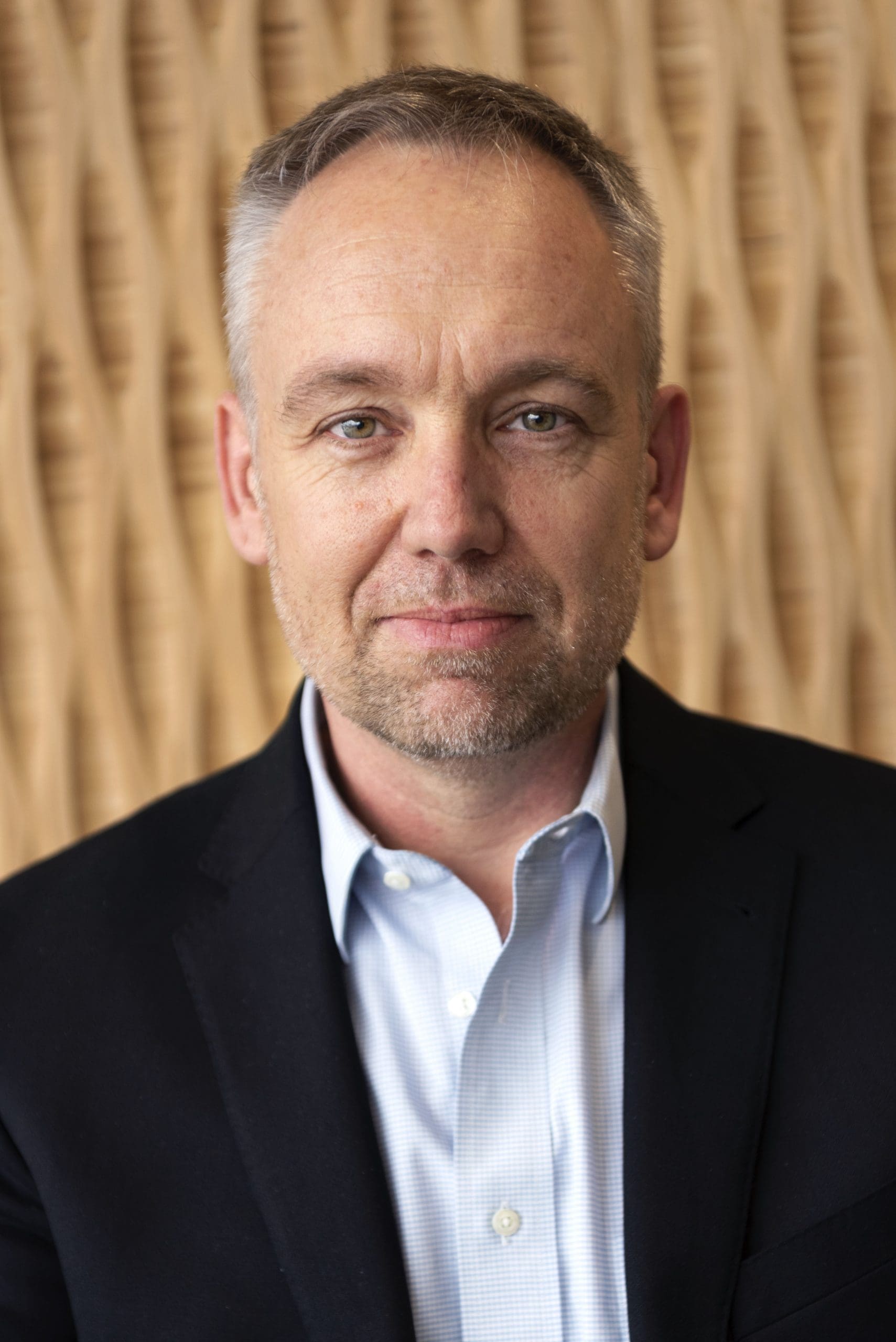
What kinds of System Dynamics work does Climate Interactive do?
We developed the C-ROADS and En-ROADS simulation models with our partners at MIT and Ventana Systems to improve policy on climate and climate-related equity around the world. Our products are of three types: user-friendly simulators; presentations and reports on our own analyses; and mind-blowing simulation-based games and workshops.
What is distinctive in your approach?
We pay particularly close attention to the user experience of our online simulations — they are the first step in building the capacity of thousands of global partners to drive change using our tools.
What is your role at Climate Interactive?
I’m co-founder and co-director of CI, which is a team of 16 staff and 12 primary contractors. I direct and contribute to the modeling but am no longer involved in writing equations.
What decisions do you have to make about the simulators and workshops?
When I’m preparing to engage a group with a SD model, I ask myself: What are the conditions and experiences we need to create so that the engagement will succeed? This starts, of course, with having the right focus, level of aggregation, boundary, and structure of the model. But also: What should the interface look like? How can we help people get engaged with the simulator?
How did you originally get interested in SD, and when was that?
I was introduced to SD by Dana Meadows in 1988, when I was a student at Dartmouth College.
What individuals and organizations are inspirations to you?
I have had memorable experiences with many “SD heroes” and mentors over the years, and they have influenced my own approach. In 1989, I saw Steve Peterson and Barry Richmond capture system structure with causal language and rigorous precision. A few years later, I saw Dana Meadows during her Beyond the Limits book tour presenting World3 scenarios, moving fluidly from model dynamics to heart-filled empathy, to defiant challenging, and then back again to model dynamics. After that, as a participant in Dennis Meadows’ Fishbanks game, I saw how his mischievous facilitation could bring people’s sometimes irrational assumptions and behavior to the surface. Then, in the late 1990s, I watched John Sterman thrill a huge auditorium of students, asking the perfect questions to build a 20-loop causal diagram interactively in real time. Also, I recall, around 2000, seeing Peter Senge showing deep respect for the current mental models of his audience, putting them in the right frame of mind to learn something new. A final experience that influenced me was watching Jim Hines use levity and humor, not just for entertainment, but also as a way to welcome participants into a playful, virtual “what if” world of one’s model.
What accomplishments are you proud of?
The Obama Administration used C-ROADS to achieve its 2014 US-China bilateral climate agreement that set up the Paris Agreement. Also, we have seen ever-growing use of the simulators all over the world – 1,499 certified facilitators have reached 121,484 people. Many legislators in the US Congress have experienced the simulators, and high-ups in the Biden Administration have seen and worked with them.
What kinds of work would you like to be doing over the next 5 years?
I’d like for us to help drive global greenhouse gas emissions down instead of up.
If you have any additional questions or comments, leave a note below! Otherwise, find Drew at www.climateinteractive.org.
Recent Posts
Society Governance Updates
Society Governance Updates Welcome, Allyson! New President Allyson Beall King joined the Policy Council as our 2024 President. Her primary role is as director of the Washington State University School of the Environment, which focuses on regional ecologies and our...
Call for Presenters: Seminar Series
Call for Presenters: Seminar Series We at the System Dynamics Society are continually seeking vibrant and knowledgeable presenters for our ongoing Seminar Series. As we unfold the calendar, there’s always a place for more insights, experiences, and expertise to enrich...
Honoring Excellence: A Glimpse into the Awards of the International System Dynamics Conference
Honoring Excellence: A Glimpse into the Awards of the International System Dynamics Conference The International System Dynamics Conference brings together experts, practitioners, and students to exchange ideas, showcase real-world applications, and celebrate...
Upcoming Events

K-12 In-service Teacher Training
Dear Colleagues, We are excited to invite you to our free webinar entitled ‘K-12 In-service Teacher Training’ on Thursday, April 18, at 2:00 p.m. EDT. In the previous webinar, we shared experiences on systems thinking practices in the education of...
Recent Business cases
A Design Value Calculator: A System Dynamics Boardgame
A Design Value Calculator: A System Dynamics Boardgame EXECUTIVE Summary Product design is a specific form of complex innovation that touches all areas of an organization’s management. While entrepreneurs recognise the value of design, they often tend to focus...
The World Bank Uses System Dynamics to Identify Root Causes of Poverty
The World Bank Uses System Dynamics to Identify Root Causes of Poverty EXECUTIVE Summary Madagascar has one of the highest poverty rates in the world. In 2022, an astonishingly three out of every four people in Madagascar lived below the poverty line. Poverty has...
Fast-Track Cities Uses System Dynamics to Enhance HIV Care
Fast-Track Cities Uses System Dynamics to Enhance HIV Care EXECUTIVE Summary Low levels of viral suppression at 69% for people with HIV make it hard to believe the 95% target level will be achieved by 2030 in St. Louis, USA. As a solution, Fast-Track Cities-STL opted...
Join us
Practitioner Profile: Steve Peterson, Independent Consultant
Practitioner Profile: Steve Peterson, Independent Consultant
Welcome to Practitioner Profiles, a series of up-close blog-length interviews with experienced System Dynamics practitioners. We have a standard set of 10 questions and let practitioners take the responses in any direction they choose. They tell us about who they are, how they got involved with the field, how they work with clients, and in what new directions they may be heading. A new profile will be posted every few weeks during 2021.
For any questions or comments, please contact the editors of these interviews, Dr. Jack Homer (jack@homerconsulting.com) and Dr. Saras Chung (saras@skipdesigned.com).
For today’s spotlight, which is the third in our series, we talked with Steve Peterson, Independent Consultant.
What kinds of System Dynamics project work do you do?
My current project work focuses on renewable energy and public health. My renewables work with the National Renewable Energy Laboratory (NREL) is quantitative, involving model development and analysis. The public health work with the Centers for Disease Control and Prevention is more qualitative and takes the form of issue-focused workshops. Over the past twenty years, I’ve worked in a lot of areas, including pharmaceutical marketing, defense logistics, financial services, and with not-for-profits and NGOs.
Could you also say something about your teaching?
I’ve taught an introductory System Dynamics course at Dartmouth College since 2010. I do this because it’s great fun and because I think it is important for people to develop their “thinking in systems” skills. I work with students to build models across a range of issues. At the end of the course, their projects are showcased in a poster symposium. Some students go on to present at the international SD conference.
What is distinctive in your approach to the work?
As a one-person shop, most of my project work is in collaboration with others. In both my teaching and consulting, I place a high value on empathy, patience, humor, and learning.
How did you originally get interested in System Dynamics, and when was that?
Mark Paich was the catalyst. Mark was my accounting professor at Colorado College, and I happened to run into him at my graduation in June 1980. Mark asked about my post-graduation plans.
When I told him that I would be starting law school in the fall, he said, “You’re going to hate it! When you decide to quit, give me a call. There’s a program at Dartmouth that is just the right thing for you.” Two weeks into law school, I had decided to quit and called Mark. The next year, I entered Dartmouth’s Thayer School where I studied System Dynamics with Dennis and Dana Meadows and with Barry Richmond. I haven’t looked back!
What can you tell us about your work with Barry Richmond at High-Performance Systems in the 1980s and 1990s?
Everybody should have a mentor like Barry. He had an infectious passion for SD, and I am grateful that I had the opportunity to work with him for over twenty years. He was a gifted teacher. I see his legacy on a more-or-less daily basis—in both my teaching and my consulting activities. Barry used to say that “anyone can do this stuff at some level, and everyone should try.” I like to think that some of his passion has rubbed off on me.
Which of your projects are you most proud of?
At the top of the list is the NREL work, which started as a small project in 2003 and developed over time in partnership with Lexidyne, LLC. This work has evolved into an analysis platform called the Biomass Scenario Model, which won the System Dynamics Applications Award in 2018. I’m also proud of my involvement in a community-focused project aimed at understanding the causes of youth violence, which I talked about at the 2020 System Dynamics Conference.
What have you learned over the years about modeling and clients?
I’ve learned to embrace version control and issue tracking systems. These are essential for managing a large model with multiple work streams and a variety of stakeholders. I’ve also developed a great appreciation for the power of simple stock-flow maps and models.
Maps can help to engage stakeholders, and you can always learn something from a simple model that you’ve put into equilibrium and then hit with a step or pulse test. Last but not least, I’ve come to appreciate the importance of a growth mindset. Whenever I teach or do project work, it’s an opportunity to learn!
What kinds of System Dynamics project work would you like to be doing over the next 5 years?
I’d like to keep teaching and working in the areas of renewables, sustainability, and public health, with the broad goal of helping people to get better at “thinking in systems.”
Recent Posts
Society Governance Updates
Society Governance Updates Welcome, Allyson! New President Allyson Beall King joined the Policy Council as our 2024 President. Her primary role is as director of the Washington State University School of the Environment, which focuses on regional ecologies and our...
Call for Presenters: Seminar Series
Call for Presenters: Seminar Series We at the System Dynamics Society are continually seeking vibrant and knowledgeable presenters for our ongoing Seminar Series. As we unfold the calendar, there’s always a place for more insights, experiences, and expertise to enrich...
Honoring Excellence: A Glimpse into the Awards of the International System Dynamics Conference
Honoring Excellence: A Glimpse into the Awards of the International System Dynamics Conference The International System Dynamics Conference brings together experts, practitioners, and students to exchange ideas, showcase real-world applications, and celebrate...
Upcoming Events

K-12 In-service Teacher Training
Dear Colleagues, We are excited to invite you to our free webinar entitled ‘K-12 In-service Teacher Training’ on Thursday, April 18, at 2:00 p.m. EDT. In the previous webinar, we shared experiences on systems thinking practices in the education of...
Recent Business cases
A Design Value Calculator: A System Dynamics Boardgame
A Design Value Calculator: A System Dynamics Boardgame EXECUTIVE Summary Product design is a specific form of complex innovation that touches all areas of an organization’s management. While entrepreneurs recognise the value of design, they often tend to focus...
The World Bank Uses System Dynamics to Identify Root Causes of Poverty
The World Bank Uses System Dynamics to Identify Root Causes of Poverty EXECUTIVE Summary Madagascar has one of the highest poverty rates in the world. In 2022, an astonishingly three out of every four people in Madagascar lived below the poverty line. Poverty has...
Fast-Track Cities Uses System Dynamics to Enhance HIV Care
Fast-Track Cities Uses System Dynamics to Enhance HIV Care EXECUTIVE Summary Low levels of viral suppression at 69% for people with HIV make it hard to believe the 95% target level will be achieved by 2030 in St. Louis, USA. As a solution, Fast-Track Cities-STL opted...
Join us
Practitioner Profile: Birgit Kopainsky, University of Bergen (UiB), Norway
Practitioner Profile: Birgit Kopainsky, University of Bergen (UiB), Norway
Welcome to Practitioner Profiles, a series of up-close blog-length interviews with experienced System Dynamics practitioners. We have a standard set of 10 questions and let practitioners take the responses in any direction they choose. They tell us about who they are, how they got involved with the field, how they work with clients, and in what new directions they may be heading. A new profile will be posted every few weeks during 2021.
For any questions or comments, please contact the editors of these interviews, Dr. Jack Homer (jack@homerconsulting.com) and Dr. Saras Chung (saras@skipdesigned.com).
For today’s spotlight, we talked with Birgit Kopainsky at the University of Bergen (UiB), Norway.
What kinds of SD projects do you do at the university?
A lot of our effort revolves around teaching the nine courses that are part of our two-year master’s program in System Dynamics. Our research projects center on sustainable development. Methodologically, we want to improve all aspects of SD practice, from knowledge acquisition to dissemination of insights. We try to bring together public and private-sector institutions and to give our students rich experiences with real-world SD applications.
What is distinctive in your approach to SD projects?
I would say it’s our human resources. In addition to the SD faculty, we have postdoctoral researchers, PhD students, and master students who help out. With these people, we can cover a broad range of tools and techniques, including data mining and analysis, experimental studies of decision making, innovative approaches to strategy development and policy design, and interactive learning environments.
In what way is your organization perhaps different from others doing SD project work?
We have about 20 new SD master students every year. This is a wonderful resource in so many ways. They come with a broad range of backgrounds, skills, and expertise—there is always somebody who fits the requirements of a given project. It is inspirational working with these students who are so ready to make an impact in the world.
What is your role in your organization, especially with regard to the SD project work?
I am one of three full professors in the SD group, and we all do some project work. I am, as my colleagues say, “the one who is able to talk to people”. I try to strengthen the links between research and application and am eager to get more private and public sector institutions intrigued about SD. I am thus always on the lookout for internship opportunities, hackathons, short courses, and seminars on modeling. I say yes to most requests for collaboration, because they usually end up improving the visibility of SD and expanding its reach.
How did you originally get interested in SD, and when was that?
In 2002 I was supposed to write a conventional agricultural economics PhD thesis and couldn’t satisfy my supervisor whose whole career had been devoted to optimization models and econometrics. Once he recognized that I was not feeling comfortable with optimization, he suggested that I might try out what he called “these systems approaches”.
With regard to SD project work, what accomplishments are you proud of?
I am excited about the work I have been doing with farming communities in developing countries where we have to accommodate to local circumstances (e.g., lack of electricity). This requires some creativity and improvisation, but it allows me to see how change happens. Also, some of our food system modeling has led to a revision of the nutrition recommendations in my home country of Switzerland. I feel I am doing something right when we get invited into a project consortium where SD plays an important role in synthesizing the other, mostly non-SD, work packages.
What challenges have you experienced with respect to SD project work?
SD has both its enthusiasts and its critics, and sometimes the first can be more challenging than the second. Enthusiasts are new clients or project partners who are unrealistically optimistic about how SD might help. While enthusiasts may sometimes help open doors, they can also create problems by overpromising and creating false expectations.
What kinds of SD project work would you like to be doing over the next 5 years?
I would like to continue working on sustainable development and resilience issues. I’d like to study more systematically how SD models can provide insights that will lead to real change.
Recent Posts
Society Governance Updates
Society Governance Updates Welcome, Allyson! New President Allyson Beall King joined the Policy Council as our 2024 President. Her primary role is as director of the Washington State University School of the Environment, which focuses on regional ecologies and our...
Call for Presenters: Seminar Series
Call for Presenters: Seminar Series We at the System Dynamics Society are continually seeking vibrant and knowledgeable presenters for our ongoing Seminar Series. As we unfold the calendar, there’s always a place for more insights, experiences, and expertise to enrich...
Honoring Excellence: A Glimpse into the Awards of the International System Dynamics Conference
Honoring Excellence: A Glimpse into the Awards of the International System Dynamics Conference The International System Dynamics Conference brings together experts, practitioners, and students to exchange ideas, showcase real-world applications, and celebrate...
Upcoming Events

K-12 In-service Teacher Training
Dear Colleagues, We are excited to invite you to our free webinar entitled ‘K-12 In-service Teacher Training’ on Thursday, April 18, at 2:00 p.m. EDT. In the previous webinar, we shared experiences on systems thinking practices in the education of...
Recent Business cases
A Design Value Calculator: A System Dynamics Boardgame
A Design Value Calculator: A System Dynamics Boardgame EXECUTIVE Summary Product design is a specific form of complex innovation that touches all areas of an organization’s management. While entrepreneurs recognise the value of design, they often tend to focus...
The World Bank Uses System Dynamics to Identify Root Causes of Poverty
The World Bank Uses System Dynamics to Identify Root Causes of Poverty EXECUTIVE Summary Madagascar has one of the highest poverty rates in the world. In 2022, an astonishingly three out of every four people in Madagascar lived below the poverty line. Poverty has...
Fast-Track Cities Uses System Dynamics to Enhance HIV Care
Fast-Track Cities Uses System Dynamics to Enhance HIV Care EXECUTIVE Summary Low levels of viral suppression at 69% for people with HIV make it hard to believe the 95% target level will be achieved by 2030 in St. Louis, USA. As a solution, Fast-Track Cities-STL opted...

